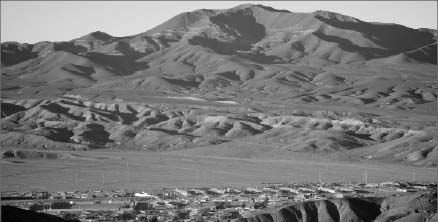Capstone Mining (CS-T) has released a prefeasibility study for its 70%-owned polymetallic Santo Domingo project in Chile that shows relatively low capital costs for a project of its scale, just as costs are on the rise for its two producing mines.
The Santo Domingo study estimates total capital costs of US$1.24 billion for the 63,500-tonne-per-day open-pit operation, thanks in part to the project’s location in a built-up part of northern Chile. In a conference call, Capstone president and CEO Darren Pylot defended the low estimate to inquiring analysts.
“We’ve had some comments on capex – comments that it would seem a little low for the size and scale of this project,” Pylot said. “I just want to reiterate [that] due to the location of the infrastructure, being the road and the power, we feel very comfortable with the capex number that we’ve come out with today.”
Stefan Ioannou, an analyst with Haywood Securities, says in a phone interview that the numbers were probably less than most expected, as he had been looking at a capital expenditure (capex) closer to US$1.3 billion, if not US$1.5
billion.
“The numbers on paper do look good,” Ioannou says. “It makes for a pretty compelling project that it makes a lot of sense to go forward with.”
Other financials are also encouraging, with an after-tax net present value of US$1.09 billion, an after-tax internal rate of return of 22% and a payback period of three years, all using a long-term copper price of US$2.25 per lb. And, with healthy magnetite iron and gold by-product credits, the company expects to produce copper at US11¢ per lb. over the life of the mine.
Pylot noted that the results were as good as or better than the due diligence numbers the company came up with before it made the move to acquire Far West Mining and its Santo Domingo project in April.
In terms of mining, the study looked at an 18-year mine life with annual production of 144 million lbs. copper, 4.1 million tonnes iron concentrate and 15,000 oz. gold, with much higher copper production in the first years of mining. Total reserves stand at 418 million probable tonnes grading 0.32% copper, 0.04 gram gold per tonne and 73 million tonnes of metal magnetite concentrate.
The project benefits from being 1 km from a paved highway, and 6 km from the town of Diego de Almagro and its 220-kilovolt power lines. As the ocean is roughly 75 km away, the company would be able to pipe in seawater for processing and use an ocean port for exports.
Of course, even if it comes in under estimates, US$1.24 billion is still a significant chunk of change. On that front, Capstone is benefitting from its partnership with Korea Resources Corp. (KORES), which owns the other 30% of Santo Domingo.
As part of their joint acquisition of Far West’s assets, KORES committed to securing 65% of the capex, or roughly US$800 million, through favourable debt financing. Of the remaining US$400 million or so, Capstone is only on the hook for about US$300 million, which it can fairly easily cover using its over $500 million in cash-on-hand.
Ioannou notes that were it not for KORES, Capstone would have had a much tougher sell on the Far West acquisition and
its attempts to develop Santa Domingo.
“For most people, when they saw Capstone was taking over Far West, the gut reaction was this was something completely out of left field for Capstone,” Ioannou says. “All their other operations can sort of be characterized as low-tonnage, high-grade, low-capex, very small, manageable operations, and this is the exact opposite end of the spectrum . . . The one saviour to it from the Capstone side is having KORES there as a partner to put a realistic financing mechanism in place.”
With the project’s financials and financing looking good, Capstone is progressing with permitting, a full feasibility study and one of the bigger challenges going forward: labour. With a lot of mining projects going on in Chile, the company admits that the skilled
labour supply is tight, though it doesn’t anticipate significant staffing problems.
Meanwhile at Capstone’s Minto mine in the Yukon and its Cozamin mine in Mexico, production is going largely as planned, though with higher-than-expected costs at Cozamin.
Second quarter results showed payable copper production of 20.5 million lbs., an increase of 3.2 million lbs. compared with last year, which, combined with higher realized copper prices, led to gross sales revenue of US$78.9 million for the quarter compared with US$69.2 million for the same quarter last year.
Net earnings, however, were significantly lower at US$15.5 million compared with US$44.7 million for the second quarter last year, due in large part to the US$21.1 million it took in through derivative instruments and US$11 million through disposal of investments in the second quarter of 2010.
Costs have escalated compared with last year at Minto as the company processes low-grade stockpiles and prepares a second pit for mining in 2012, but the rise was expected. Contract crushing is going well and exceeding targets. At Cozamin, the company has successfully opened many more working faces and eliminated bottlenecks, but labour negotiations and concessions have led to higher overall cash costs.
For the year, Capstone emphasized it is keeping its full-year guidance at 80 to 85 million lbs. copper, while raising cost estimates from US$1.30-US$1.35 to US$1.45-US$1.50 per lb.
Capstone’s share price dipped 4¢ to $3.23 on the day of the quarterly results on a million shares traded. The company has a 52-week share price range between $2.29 and $4.99, and 373 million shares outstanding.


Be the first to comment on "Santo Domingo a feather in Capstone’s cap"